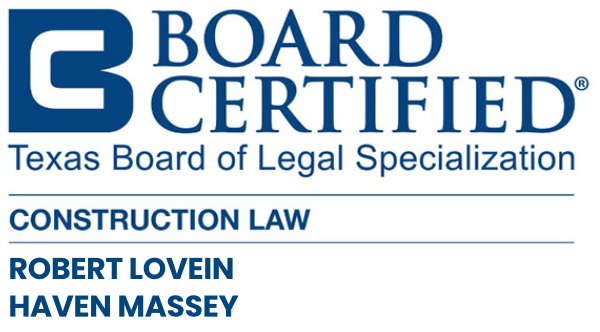Welcome to Lovein Ribman, where we understand that navigating child custody matters can be emotionally challenging and legally complex. Child custody laws determine the legal rights and responsibilities of parents or guardians regarding the care and upbringing of their children post-divorce or separation. Our firm is dedicated to guiding families through these sensitive issues with compassion, expertise, and a commitment to achieving the best possible outcomes for our clients and their children. Whether you’re seeking to establish initial custody arrangements, modify existing orders, or resolve disputes amicably or through litigation, our experienced family law attorneys are here to provide the support and advocacy you need. We recognize that every family is unique, and we tailor our approach to meet the individual needs and circumstances of each client. At Lovein Ribman, we’re here to help you protect your parental rights and prioritize the well-being of your children, ensuring a brighter future for your family.
CHILD CUSTODY LAWS
Child custody laws govern the legal rights and responsibilities of parents or guardians regarding the care, upbringing, and decision-making for their children following separation or divorce. These laws address both physical custody, which determines where the child primarily resides, and legal custody, which involves the authority to make important decisions concerning the child’s welfare, such as education, healthcare, and religious upbringing. Custody arrangements are typically based on the best interests of the child, considering factors such as the child’s needs and preferences, the parents’ ability to provide a safe and nurturing environment, and any history of abuse or neglect. Understanding child custody laws is crucial for parents navigating family law matters, as they guide the development of parenting plans and determine the allocation of parental responsibilities.
Conservatorship (Custody) in Texas
In the realm of Texas family law, Joint Managing Conservatorship (JMC) and Sole Managing Conservatorship (SMC) represent two primary legal frameworks governing child custody arrangements post-divorce or separation. These arrangements delineate the allocation of rights and responsibilities between parents or guardians regarding the upbringing and care of their children. Below, we brief summary of each concept:
Joint Managing Conservatorship (JMC):
Joint Managing Conservatorship is a custody arrangement where both parents share rights and duties concerning the child. This includes making significant decisions related to the child’s education, healthcare, religious upbringing, and extracurricular activities. Despite the shared decision-making authority, joint managing conservatorship does not necessarily imply an equal division of parenting time or physical custody. Instead, it emphasizes the collaborative involvement of both parents in the child’s life post-separation or divorce.
Under a JMC arrangement, parents are encouraged to work together in the best interests of the child, fostering a cooperative co-parenting relationship. While both parents share decision-making authority, clear communication and conflict resolution mechanisms are essential to navigate potential disagreements effectively. The terms and conditions of joint managing conservatorship may vary based on the unique circumstances of each case, with the overarching goal of promoting the child’s well-being and ensuring both parents remain actively involved in their upbringing.
Sole Managing Conservatorship (SMC):
In contrast, Sole Managing Conservatorship grants exclusive rights and duties regarding the child’s upbringing to one parent. The parent designated as the sole managing conservator assumes primary physical custody of the child and possesses sole decision-making authority over critical matters such as education, healthcare, and religious upbringing.
Sole Managing Conservatorship is typically awarded in situations where the court deems it necessary to prioritize the child’s best interests or when one parent is deemed unfit or unable to fulfill their parental responsibilities adequately. While this arrangement grants one parent primary custodial rights, it’s essential to ensure that the child maintains a meaningful relationship with the non-custodial parent, provided it is consistent with their safety and well-being.
Possession and Access
After the determination of conservatorship has been made, the next step is to establish a possession and access schedule. This schedule provides when a child will be in the care of each conservator, usually down to the hour. However, court orders generally include that the schedules are applicable in “the absence of mutual agreement”, giving flexibility to make arrangements that suit all of the family dynamics. Possession and access schedules usually fall into one of the following categories:
Standard Possession Order (SPO): A standard possession order, as outlined in the Texas Family Code, is presumed by the Texas Legislature to be in the best interest of the child, applicable to children aged three or older. For children under three, possession and access arrangements are at the discretion of the Texas courts. The standard possession order includes:
For parents residing within 100 miles of each other, the typical Standard Possession Order includes the following:
Weekend Visitation: the noncustodial parent has possession of the child on the first, third, and fifth weekends of each month, beginning on Friday at 6:00 PM and ending on the following Sunday at 6:00 PM.
Thursday Visitation: the noncustodial parent also has possession of the child on Thursday evenings during the school year, from 6:00 PM to 8:00 PM. If you live within 50 miles of the custodial parent it is presumed to be in the best interest of the child that the non custodial parent gets Thursday after school release to the return of school on Friday, every Thursday during the school year.
Holidays: the noncustodial parent has visitation on certain holidays, including alternate holidays in even-numbered years. Holidays include Thanksgiving, Christmas, and spring break, among others.
Summer Visitation: The noncustodial parent typically has an extended period of possession during the summer, usually 30 days, which can be split into two periods.
For parents residing over 100 miles apart, the schedule is adjusted to accommodate the distance. The noncustodial parent can choose between the first, third, and fifth weekends or elect one weekend per month. Further, the noncustodial parent is entitled to spring break every year and more summertime possession, 42 days.
Non-Standard Possession Orders: In today’s world, many parents and caretakers work non-traditional hours. Texas courts can deviate from the standard possession order if a party demonstrates that it would not be in the child’s best interest. No definitive rule dictates when a court can deviate, with decisions based on the perceived best interest of the child. The State of Texas upholds public policy to ensure frequent and continuing contact with parents acting in the child’s best interest.
Supervised Possession: In specific situations, a parent may request restrictions on the other parent’s possession or access to the child if it is deemed in the child’s best interest. However, complete denial of access is rare and occurs only in extreme circumstances. Courts generally prefer to grant supervised visitation, allowing a parent to interact with their child under the supervision of a third party.
It’s important to note that these are general guidelines, and the actual details of the visitation schedule can vary based on the specific court order or the agreement reached by the parents. Parents can also work together to create a customized visitation schedule that suits their circumstances, as long as it is in the best interests of the child.
Best Interest of the Child Defined
In Texas, courts prioritize the best interests of the child when making decisions regarding custody, visitation, and other matters related to the child’s welfare. The Texas Family Code outlines several factors that courts consider when determining the best interests of the child. While not an exhaustive list, these factors include:
- The Child’s Wishes: The court may consider the child’s preferences, especially if the child is of sufficient age and maturity to express them. However, the weight given to the child’s wishes depends on various factors, including the child’s age and maturity.
- The Child’s Physical and Emotional Needs: The court evaluates each parent’s ability to meet the child’s physical, emotional, and developmental needs. This includes considerations such as providing a safe and stable home environment, adequate healthcare, nutrition, and emotional support.
- The Stability of Each Parent’s Home Environment: Courts assess the stability of each parent’s home environment, including factors such as the physical living conditions, the presence of other family members or caregivers, and the level of support available to the child.
- The Parent-Child Relationship: The court examines the quality of the relationship between each parent and the child, including the history of caregiving, bonding, and involvement in the child’s life. Factors such as the parent’s willingness to foster a positive relationship with the other parent may also be considered.
- The Mental and Physical Health of Each Parent: The court may consider the mental and physical health of each parent, including any history of substance abuse, mental illness, or other issues that may impact their ability to care for the child.
- The Parenting Skills and Abilities of Each Parent: Courts assess each parent’s parenting skills and abilities, including their ability to provide for the child’s needs, communicate effectively with the child, and promote the child’s overall well-being.
- Any History of Domestic Violence or Abuse: The court takes into account any history of domestic violence, child abuse, or neglect by either parent. Protecting the child from harm is paramount, and a history of abuse or violence may significantly impact custody decisions.
- The Child’s Educational and Social Needs: Courts consider the child’s educational and social needs, including their school performance, extracurricular activities, and social interactions. They may also assess each parent’s involvement in the child’s education and social development.
- The Geographic Proximity of the Parents’ Residences: The court may consider the distance between the parents’ residences and the impact it may have on the child’s ability to maintain relationships with both parents, attend school, and participate in activities.
- Any Other Relevant Factors: The court has discretion to consider any other relevant factors that may affect the best interests of the child in a particular case.
It’s important to note that the weight given to each factor may vary depending on the circumstances of the case, and courts strive to make decisions that promote the child’s safety, well-being, and overall development. Additionally, the best interests of the child standard guides not only custody decisions but also decisions related to visitation, parental rights, and other matters affecting the child’s welfare.
Consequences of Not Following the Schedule
If a parent is not complying with the court-ordered possession schedule, the other parent can take legal action to enforce the order. A motion for enforcement can be filed at any time and is applicable to both temporary and final orders. However, before filing a motion for enforcement, it is highly recommended that you attempt to work it out with the other parent as it may have been a misunderstanding or something entirely out of their control. It may save you time, money and heartache. If this is not the case, and a hearing is entirely necessary, the violating parent must be personally served and have at least 10 days notice before a hearing can proceed. During the hearing, if a court determined that there was a failure to comply with the order, and depending on the seriousness of the violations, the court can will generally do one of the following: (1) make a finding of contempt, potentially leading to imprisonment and/or monetary fines; (2) grant “make-up” visitation to compensate the parent who initiated the enforcement; (3) award attorneys’ fees and costs; and/or (4) modify the designation of the child’s primary residence if the party initiating the enforcement action files for a modification of conservatorship.
How to Modify Order
If you are seeking to change an existing court order related to conservatorship and possession and access arrangements for a child, this process requires demonstrating a material and substantial change in the circumstances since the last child custody order was entered. However, if you are seeking a modification within one year or attempting to change who has the right to designate the primary residence on a temporary order, the party seeking this change must show one of the following: (1) the child’s present circumstances at the other home may endanger the child’s physical health or emotional development, (2) the primary conservator is the person seeking or consenting to the modification, or (3) the primary conservator has voluntarily relinquished the possession of the child for at least six months.

















